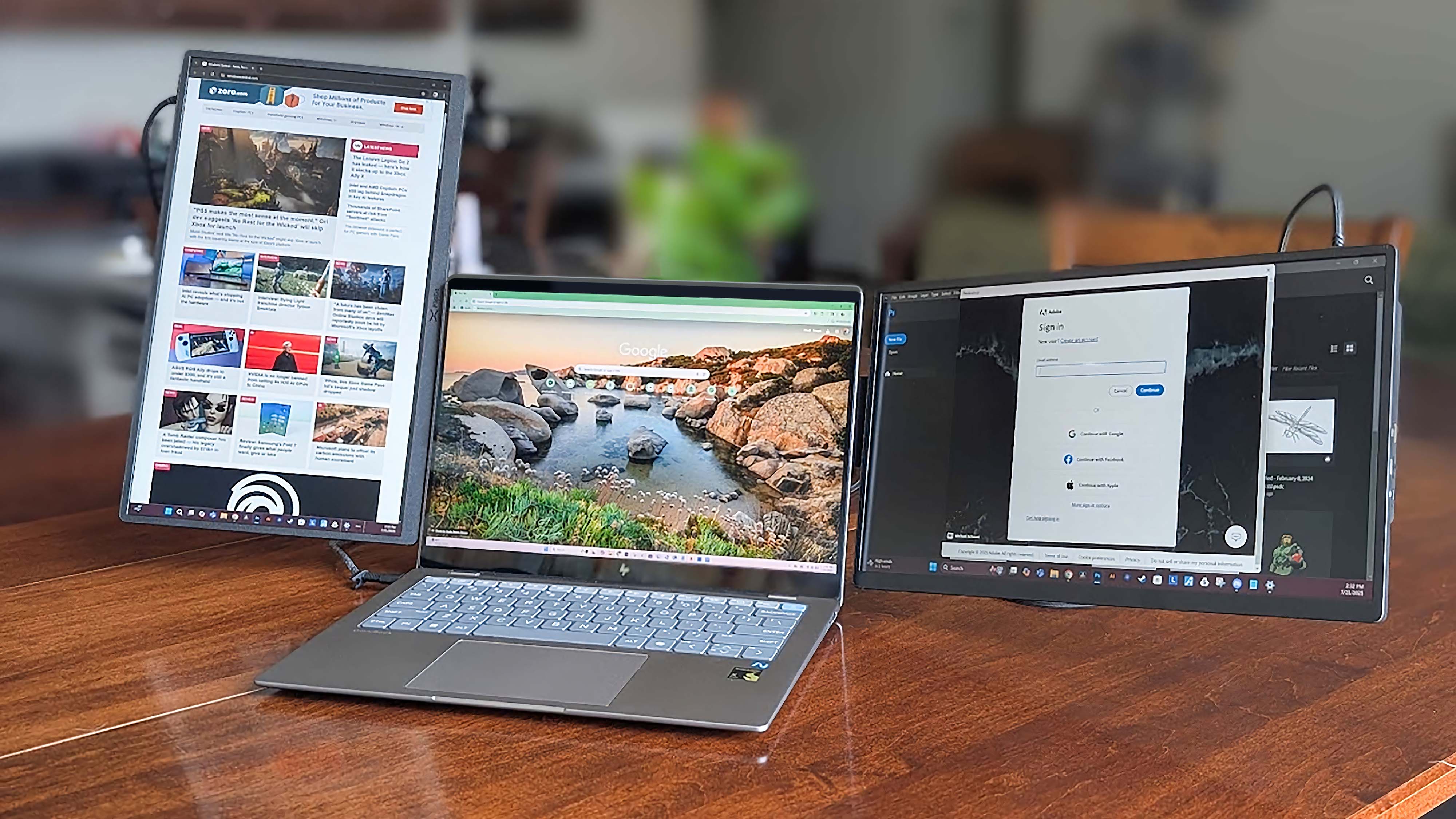"Is the x86 done? Well, I'll tell you, rumors of my death are severely exaggerated. We are alive and well, and the x86 is thriving." Intel CEO speaks on its collaboration with AMD
Qualcomm has shown how powerful Windows on ARM has become, but Intel's Pat Gelsinger speaks alongside AMD to assure that x86 isn't going anywhere.


What you need to know
- Lenovo Tech World 24 is going on right now, a multi-day conference where analysts, media members, and tech leaders come together to discuss the latest tech offerings.
- Yesterday morning, Intel and AMD announced a collaboration in which the two manufacturers formed the x86 Ecosystem Advisory Group.
- As part of Lenovo's event, Intel CEO Pat Gelsinger came on stage and explained that x86 architecture isn't just "alive and well" but also "thriving," despite what some might say.
- Of course, these sentiments are due to Qualcomm's latest Snapdragon X ARM processors, which have proved to be powerful competitors in the chip manufacturing field.
Yesterday morning, I attended the first day of the Lenovo Tech World 24 conference in Bellevue, Washington. Early on, I sat in on the event's keynote, at which some very big tech leaders from around the world spoke to the analysts and media gathered. At one point, Lenovo CEO Yang Yuanqing (affectionately known as "YY") invited longtime friend and business partner Intel CEO Pat Gelsinger onto the stage. After reminiscing about their friendship a bit, Gelsinger alluded to the x86 Ecosystem Advisory Group press release that had been announced earlier that morning and explained to conference attendees that despite what some people may be saying, x86 is still doing very well.
In case you haven't had time to keep up with the latest news, the reason some might think x86 is on its way out is because of Qualcomm and its AI-enabled Snapdragon X chips. This year's ARM-based processors (created by a group of former Apple employees) have proved to offer excellent performance and powerful AI capabilities within laptops and mobile devices. As you can imagine, this has made Qualcomm a powerful rival against the likes of traditional x86 chip makers AMD and Intel. So, it's no wonder the two have decided to join together to fortify their shared CPU focus against a common challenger.
Some have said, 'Well, is the x86 done?' Well, I'll tell you, rumors of my death are severely exaggerated. We are alive and well, and the x86 is thriving.
Pat Gelsinger, Intel CEP\O
While talking on the subject, Gelsinger stated, "Some have said, 'Well, is the x86 done?' Well, I'll tell you, rumors of my death are severely exaggerated. We are alive and well, and the x86 is thriving. We think of it as one of the most significant periods of innovation in front of us. And we see that the x86 architecture — this foundation of computing for decades — is about to go through a period of customization, expansion, scalability... Just this morning... Intel and AMD announced the x86 Ecosystem Advisory Group, and for that, Lisa [AMD CEO Lisa Su] and Pat agreed on something. Who'd have thunk?"
In addition to Intel and AMD, the x86 Ecosystem Advisory Group is comprised of several different founding members (companies), such as Google, Microsoft, and Meta. But what exactly is the purpose of the Advisory Group? Well, Gelsinger explained that it "brings together leaders from across the ecosystem to shape the future of the x86, to simplify software development, to ensure interoperability and interface consistency, to provide developers with standard architecture, tools, instruction sets, a clear view of the future." He further stated, "the value of the thriving ecosystem is greater than ever, and the advantage in this era of AI and 3D composition and chiplets, we think, ushers in a new category of innovation around systems..."

• Best AI laptops
• Best Copilot+ PCs
• What is an AI PC?
• What is an AI-boosted NPU?
• Why is TOPS important for AI?
A while later, AMD CEO Lisa Su came on stage and expanded upon the purpose of the new x86 Advisory Group and its role with AI.
"So Pat was on stage," she said, "and he mentioned our x86 Advisory Group. That is something that tells you just how unique a time this is in technology. At the end of the day, what we're trying to do is accelerate compute and accelerate the adoption of compute. x86 has been, you know, the foremost leader in architecture over the last 40 years, and the idea is AMD and Intel bringing together all of these founding members, can really accelerate the pace of innovation going forward."
With such influential members, it's easy to assume the group will be able to meet its goals.
All the latest news, reviews, and guides for Windows and Xbox diehards.
So, does Qualcomm's ARM-based Snapdragon X or x86 have anything to fear? As I've previously written, the world has plenty of use for both x86 and ARM processors. They both offer excellent performance in specific areas but aren't perfect on their own. For instance, the ARM-based Snapdragon X chips aren't the most powerful, but using them allows OEMs to produce lightweight laptops with long battery life. Meanwhile, x86 is much more powerful but generally drains battery life faster than Snapdragon X. Due to these tradeoffs, I don't see one chip type overtaking the other any time soon.

Self-professed gaming geek Rebecca Spear is one of Windows Central's editors and reviewers with a focus on gaming handhelds, mini PCs, PC gaming, and laptops. When she isn't checking out the latest games on Xbox Game Pass, PC, ROG Ally, or Steam Deck; she can be found digital drawing with a Wacom tablet. She's written thousands of articles with everything from editorials, reviews, previews, features, previews, and hardware reviews over the last few years. If you need information about anything gaming-related, her articles can help you out. She also loves testing game accessories and any new tech on the market. You can follow her @rrspear on X (formerly Twitter).

